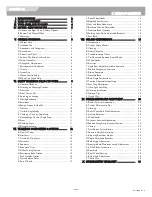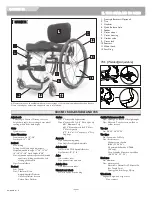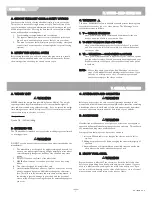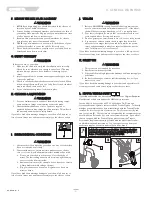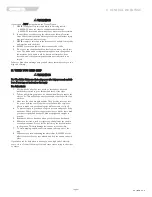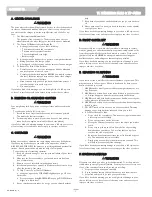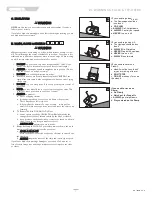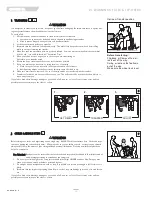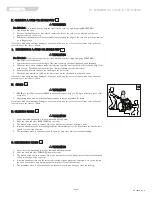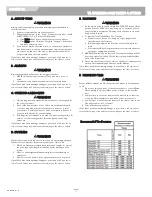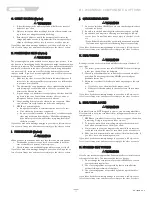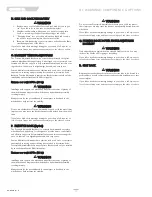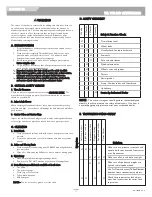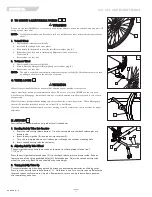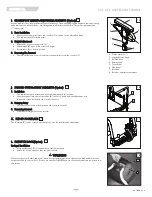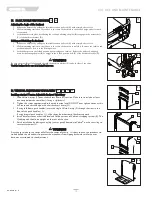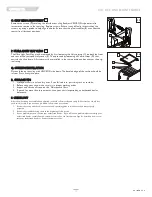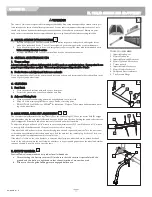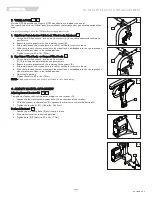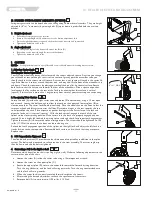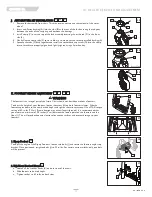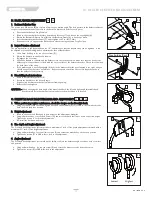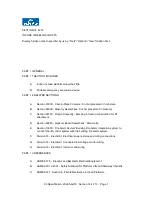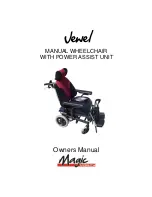
MK-100084 Rev. A
10
Q UI C KI E 7 R
VI. WARNINGS: FALLS & TIP-OVERS
I. TRANSFERS
WARNING
It is dangerous to transfer on your own. It requires good balance and agility. Be aware that there is a point dur-
ing every transfer when the wheelchair seat is not below you.
To avoid a fall:
1.
Work with your health care advisor to learn safe methods for transfers.
a. Learn how to position your body and how to support yourself during a transfer.
b. Have someone help you until you learn safe transfer methods.
2.
Lock the rear wheels before you transfer.
3.
Be aware that the chair can still slide and/or tip. The wheel lock keeps the rear wheels from rolling
while you are perforrming the transfer.
4.
Make sure that the pneumatic tires are properly inflated. Low tire pressure may allow the rear wheel
locks to slip. (see table in Section G “Pneumatic Tires”
5.
Move your chair as close as you can to the seat you are transferring to.
If possible, use a transfer board.
6.
Rotate the front casters until they are as far forward as possible.
7.
If you can, remove the footrests, or swing them out of the way.
a. Make sure your feet do not catch in the space between the footrests.
b. Avoid putting weight on the footrests as this may cause the chair to tip.
8.
Make sure armrests are removed, or out of the way and do not interfere with the transfer.
9.
Transfer as far back onto the seat surface as you can. This will reduce the risk that the chair will tip or
move away from you.
If you fail to heed these warnings damage to your chair, a fall, tip-over or loss of control may occur and can
possibly cause severe injury to the rider or others.
8
7
9
7
Before transferring:
Flip-back, or Remove the arm-
rests out of the way.
Swing, or remove the footrests
out of the way.
Make sure the wheel lock is set.
Optimum Transfer position
GET READY
TRANSFER
ADJUST
8
1.
2.
3.
ADJUST
GET READY
TRANSFER
J. CURBS & SINGLE STEPS
WARNING
Before riding over curbs, and negotiating even a single step, ALWAYS ask for assistance first. Curbs and steps
can cause tipping and serious bodily harm. When in doubt as to your ability to avoid, or traverse any obstacle,
always ask for help. Be aware of your riding skills and personal limitations. Develop new skills only with the
help of a companion.
For Attendant:
Each person who assists the rider with curbs and steps should read and follow all instructions
and warnings pertaining to attendants, and caregivers.
1.
Do not try to climb a high curb or step (more than 4 inches high) UNLESS you have help. Doing so may
cause your chair to exceed its balance point and tip over.
2.
Go straight up and straight down a curb or step. If you climb or descend at an angle, a fall or tip-over is
likely.
3.
Be aware that the impact of dropping down from a curb or step can damage your chair or loosen fasten-
ers.
If you fail to heed these warnings damage to your chair, a fall, tip-over or loss of control may occur and can
possibly cause severe injury to the rider or others.
9



